Native plants
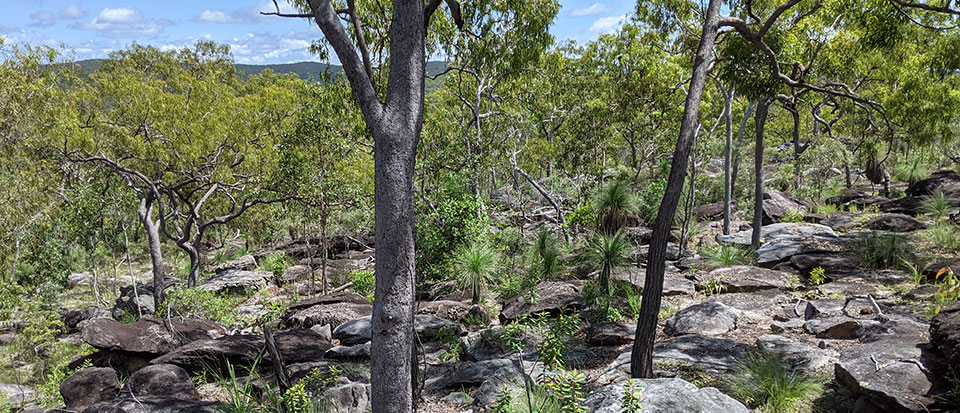
Queensland has one of the most diverse flora in Australia with over 14,000 native species of plants, algae, fungi and lichens. New species are continuously being discovered and documented. A full list of species, including relevant statistics, is available in the Flora and Fungi Census .
The most recognisable plants in Queensland are the wattles (Acacia species) and eucalypts (Eucalyptus and Corymbia species) that dominate many ecosystems, along with commonly cultivated native plants such as lilly pillies (Syzygium species) and Callistemons (Melaleuca species). The flowering plants (angiosperms) comprise the largest group, but Queensland has many non-flowering native species of conifers and cycads (gymnosperms) and ferns and fern allies (pteridophytes). Queensland also has diverse species representing other flora groups (bryophytes, algae, lichens, fungi).
Interesting facts
- More than one-third of the flora of Queensland are endemic to the state, that is, they are found nowhere else in the world.
- There are more than 8,800 species of native angiosperms, gymnosperms, ferns and fern allies (vascular plants) in Queensland, representing approximately half of the known number of species in Australia.
- More than half of Australia’s cycad species and 80% of Australia’s fern species occur in Queensland, with many endemic species in these groups.
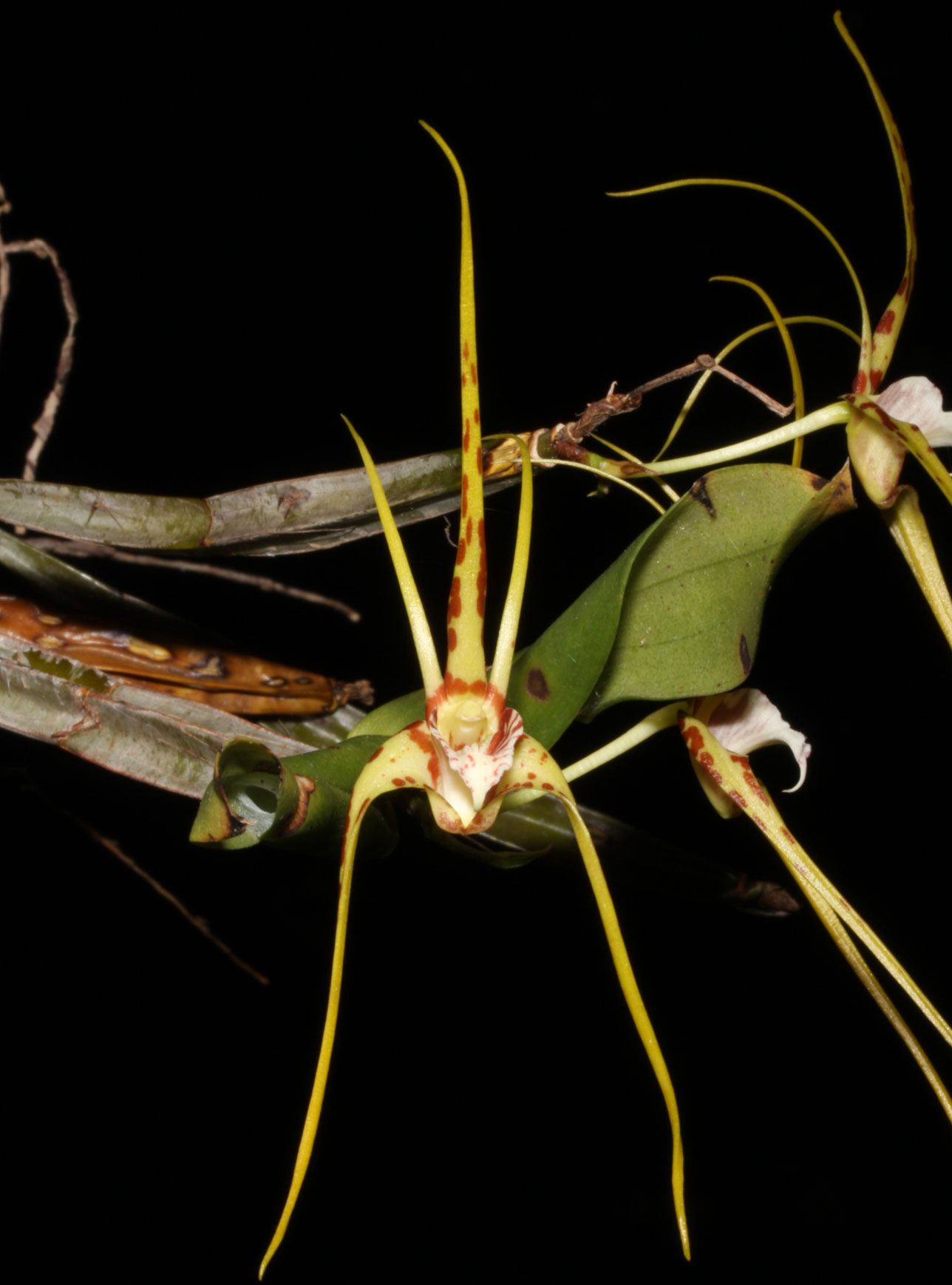

Flowering plants
Queensland has many of the world’s most ancient flowering plants. Woody climbing vines like Austrobaileya occur in rainforests of the Wet Tropics. Water lilies such as Nymphaea occur widely in bodies of water, both natural and man-made. These types of plants are of ancient lineage (over 130 million years) and are thought to have given rise to the great diversity of flowering plants now known.
There is considerable diversity of flowering plants throughout Queensland, however, the highest numbers of genera and species are found in rainforests, especially on Cape York Peninsula, the Wet Tropics and the Border Ranges. Rainforests are notable for the large number of different plant families and genera that are present. They are composed of species that have evolved in Australia or have migrated from areas to the north, especially New Guinea. The continuous exchange of flora across Torres Strait and from islands in the Pacific has ebbed and flowed with sea level changes over time and continues to the present. The rainforests of Queensland have contributed plants of economic importance such as macadamia (Macadamia integrifolia) nuts and red cedar (Toona ciliata) timber. Recent industries have been developed from the commercialisation of native lime (Citrus australasica) fruits and lemon myrtle (Backhousia citriodora) foliage.
A high diversity of flowering plants can also be found in coastal heathland and swamp communities and on rocky mountains with marked elevational range. Outside of rainforests, wattles (Acacia species) and eucalypts (Eucalyptus and Corymbia species) dominate in the overstorey with hundreds of species across the state. Many define regional ecosystems throughout Queensland and include iconic species such as brigalow (Acacia harpophylla), mulga (Acacia aneura), ironbark (Eucalyptus spp.) or spotted gum (Corymbia citriodora) that have been significant in the agricultural and economic development of Queensland.
The legumes (Leguminosae, 938 species), myrtles (Myrtaceae, 693 species) and grasses (Poaceae, 641 species) form the three largest families of native vascular plant species in Queensland. Grasses are the largest family of introduced species that form the basis of our pastoral industry as well as the major source of many weeds. The sedges (Cyperaceae) and the orchids (Orchidaceae) are also well represented in Queensland .
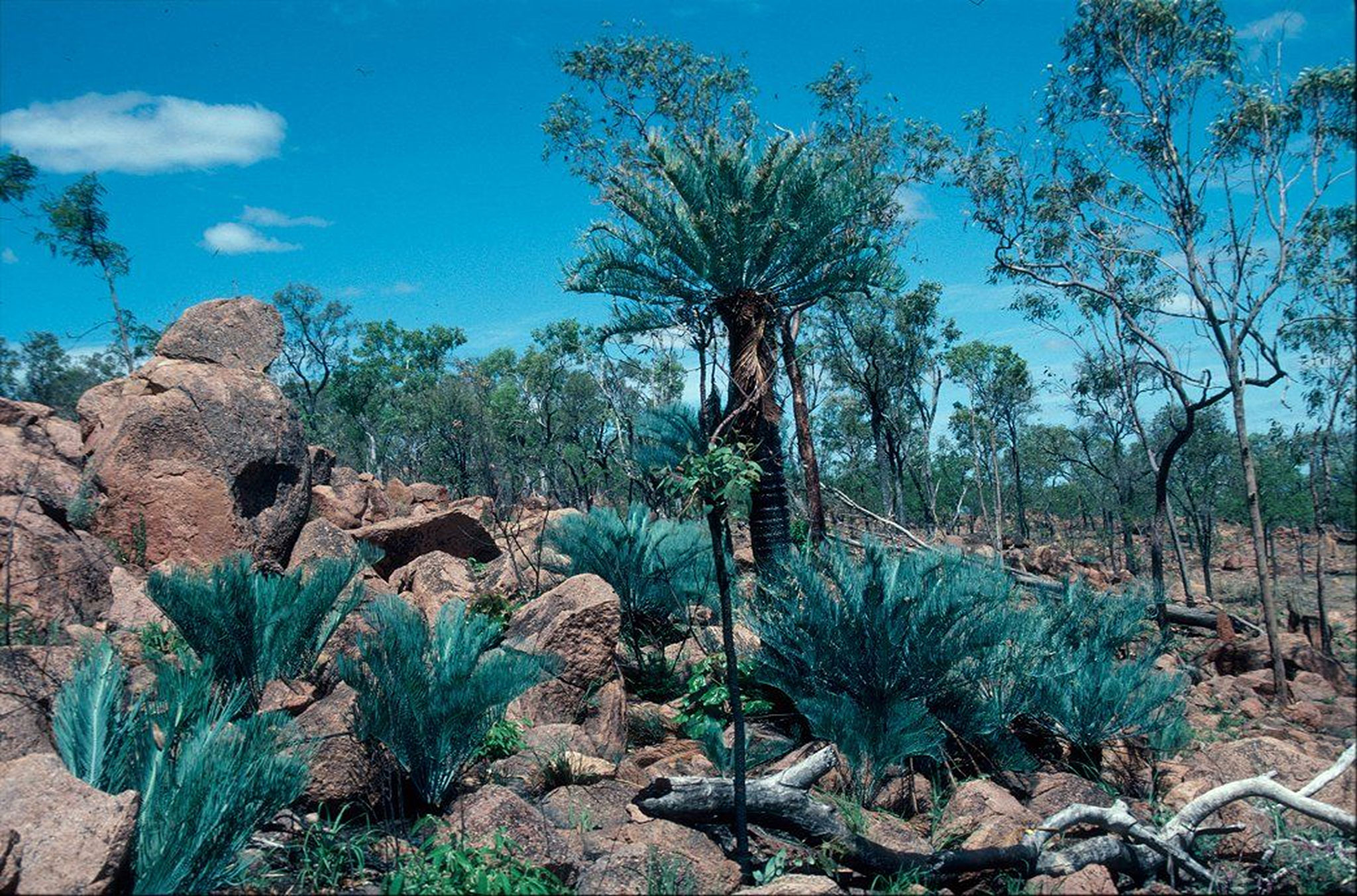

Conifers and cycads
Queensland ecosystems feature many plants that are non-flowering and vascular (with specialised water transporting cells in the stems), comprising the gymnosperms (conifers, cycads, Gnetum), ferns and fern allies. The origins of all these groups are quite ancient and pre-dates the flowering plants. They are especially common in the rainforests where ferns, in particular, can be abundant and most diverse.
Cycads are very diverse in Queensland. Australia, as a whole, has about one-third of the world’s known species. About 45 species in four genera of Cycads are recognised in Queensland. One Queensland species, Lepidozamia hopei, from the Wet Tropics is the tallest growing cycad in the world, with examples of just under 20m tall being recorded. Cycads have male and female individuals (dioecious); the males produce pollen cones and the females produce seed in either closed or open cone like structures. Pollination in cycads can be by insects such as beetles and thrips, or a combination of wind and insect activity.
The conifers of Queensland comprise only 20 species in five genera. All the species are dioecious, with male and female cones found on separate trees. They are also thought to be wind-pollinated, producing pollen in cones and the fruit in either cones or as fused cone scales that are fleshy, exposed and attractive to birds. It is speculated that the form of some species such as bunya pine (Araucaria bidwillii) may have been an adaptation to grazing pressure from long-extinct megafauna. The paucity of species is offset, in part, by domination of many of the drier rainforests by conifers such as bunya pine, hoop pine (Araucaria cunninghamii) and kauri pine (Agathis robusta), with the latter two being significant sources of timber for housing and furniture in the recent past. Outside of the rainforests, cypress pine (Callitris glaucophylla) is a popular timber species due to its resistance to termites; this species is largely harvested from areas of state forest. Large areas of hoop pine production forestry continue to be managed across southern Queensland.
Gnetum is a very unique plant and the only genus in its own family Gnetaceae. They are dioecious evergreen trees and shrubs and are unusual in the gymnosperms for possessing vessel elements in the xylem (a flowering plant feature). One species occurs in Queensland, only on a handful of islands in Torres Strait. It is otherwise known from New Guinea and Indonesia.
These ancient land plants remain an attractive and unique part of our landscape and evoke connections to a pre-historic past where the dinosaurs ruled the planet. Many of these species, especially some cycads and ferns, are now threatened or near-threatened and are receiving conservation effort .
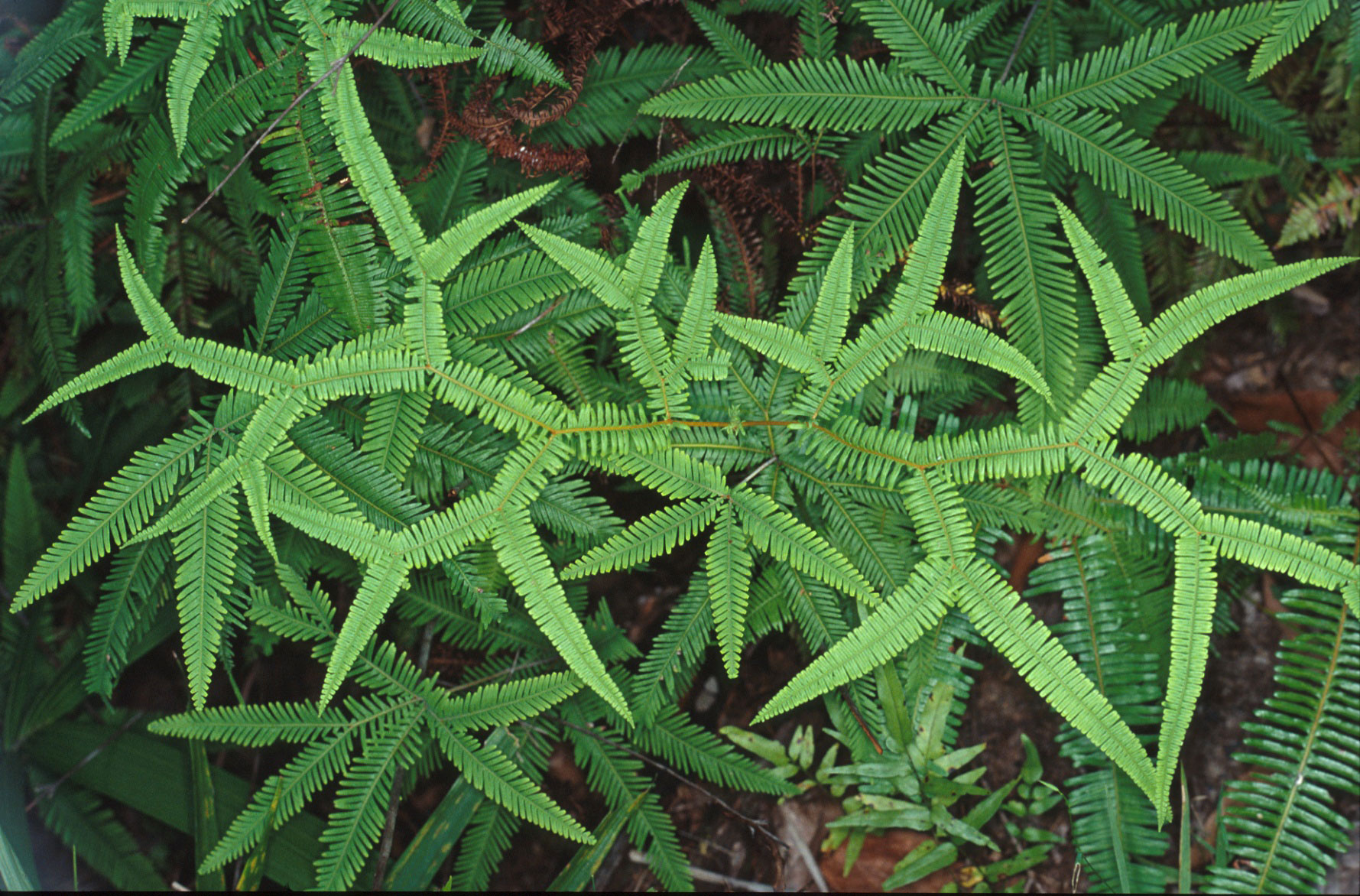

Ferns and lycophytes
Queensland has a rich fern flora, compared to other states of Australia. The majority are plants of the rainforest floor or canopy (epiphytes), but a significant number are adapted to drier conditions, some even thriving in near-desert environments. Of the nearly 470 fern species native to Australia, some 399 are recorded from Queensland.
Some ferns are adapted to limestones (e.g. cave fern, Tectaria devexa), to sandstones, granites and even shales (e.g. silver elk, Platycerium veitchii), and some to swampy conditions (e.g. bungwall, Telmatoblechnum indicum, thelypteris, Thelypteris confluens). Others are specialists in life in the canopy (e.g. some tassel ferns, Phlegmariurus species) or as secondary epiphytes on other ferns (e.g. ribbon fern, Ophioderma pendula with rhizomes embedded in elk- and stag-horn ferns, Platycerium bifurcatum, P. hillii and P. superbum).
Some ferns are drought-adapted to the extent that they are known as ‘resurrection plants’ (e.g. many Cheilanthes species) while some are specialists in ephemeral water bodies like small lakes or even melon-holes (e.g. water clovers or nardoo, Marsilea species), surviving as long-lived sporocarps during dry periods. Other drought-tolerant ferns employ a specialised photosynthetic mechanism, called CAM (crassulacean acid metabolism), whereby photosynthesis occurs during the day, while respiration (which is a major cause of water loss) and carbon dioxide exchange and storage, needed for photosynthetic reactions, occurs at night. Ferns such as the felt or rock ferns (Pyrrosia species), elk- and stag-horn ferns (Platycerium species), and some aquatic or semi-aquatic Isoetes, have this adaptation.
Queensland has 16 species of tree ferns (Alsophila, Cyathea, Sphaeropteris (Cyathaceae), Dicksonia (Dicksoniaceae), Leptopteris and Todea (both in Osmundaceae), 43 species of filmy ferns (family Hymenophyllaceae), 11 species of tassel ferns (Phlegmariurus species), 10 species of maidenhair ferns (Adiantum species, family Pteridaceae)—one of which has four distinctive varieties (rough maidenhair, Adiantum hispidulum)—and nine species of club moss (Selaginella species). Drought tolerance is a feature of some genera of Pteridaceae, specifically Cheilanthes (12 species) and Pellaea (5 species ).
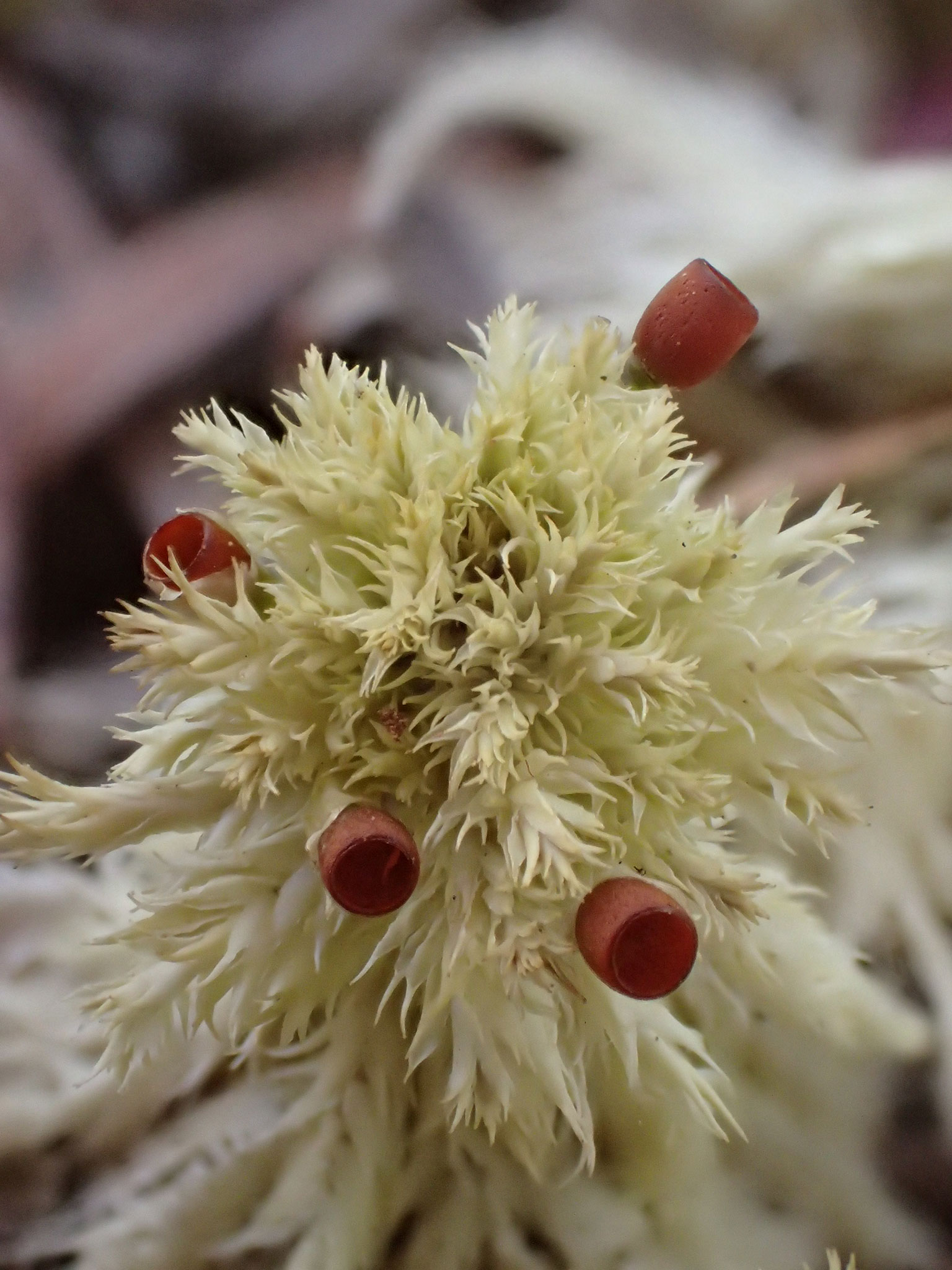

Mosses, liverworts and hornworts
‘Bryophyte’ is a collective term for three distinct lineages of non-vascular land plants: mosses (Bryophyta), liverworts (Marchantiophyta) and hornworts (Anthocerotophyta). There are an estimated 20,000 species worldwide with approximately 1,000 known species occurring in Queensland.


Algae
Algae and cyanobacteria (blue-green algae) have traditionally been grouped together based on their ability to undertake photosynthesis. Some species are not photosynthetic but are classified within ‘algae’ because of their resemblance to photosynthetic forms. Unlike land plants which evolved from a common ancestor, different lineages of algae have evolved separately in aquatic environments over the last three billion years. These different evolutionary histories are reflected in the current classification scheme which assigns algal species to four of the six Kingdoms of Life on Earth: cyanobacteria (Bacteria), red and green algae (Plantae), euglenoids and dinoflagellates (Protozoa) and the brown algae, diatoms and several others (Chromista). ‘Seaweed’ or ‘macroalgae’ is a term given to those species found in marine habitats, which are macroscopic and multicellular. They include some species of red, green and brown algae. In general, algae and cyanobacteria play an important role in the aquatic ecosystems underpinning food webs including those supporting commercial fisheries, contributing to global carbon and nitrogen and sulphur cycles, stabilizing sediments to improve water quality, and providing habitat for many other species .
Globally, there are approximately 34,000 described species of algae and cyanobacteria, but this is probably only a tenth of the species still waiting to be discovered There are at least 12,000 species of algae that are thought to occur in Australia.
The Queensland Herbarium maintains a significant collection of specimens from marine, freshwater and terrestrial habitats in Queensland, other Australian states and overseas. It is hoped that the collection, along with other available resources, will encourage more people to conduct algal taxonomic research that will aid in discovering, describing and documenting poorly known species.
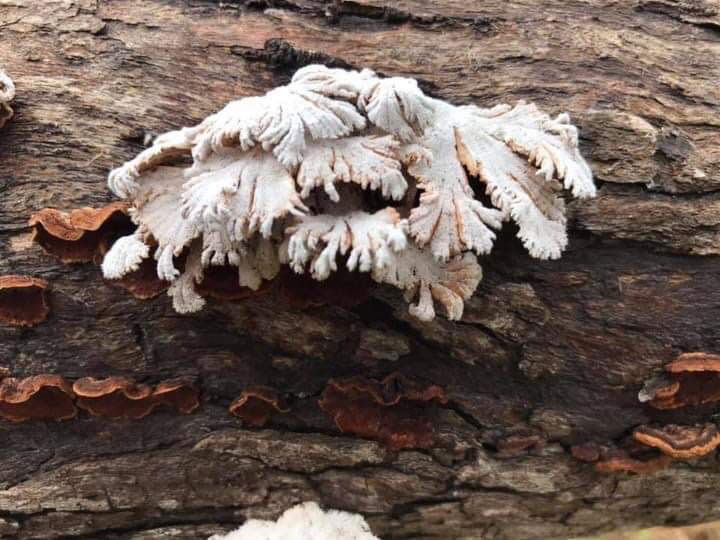

Fungi
Fungi, like plants and animals, are eukaryotes: their cells contain a nucleus. Surprisingly, perhaps, they are genetically more closely related to animals than to plants. Some hints as to this relationship are evidenced in both the presence of chitin in fungal cell walls (also present in molluscs and in the exoskeleton of arthropods), and in the fact that they are heterotrophic, acquiring their food via the actions of digestive enzymes which they secrete onto/into the substrates upon which they reside (generally achieved internally in animals). The resultant dissolved molecules are then absorbed by threadlike structures called hyphae (collectively referred to as a mycelium) which constitute the main body of the organism.
Fungi are the principal decomposers in many ecosystems, performing a vital role in the breakdown of organic matter and in the recycling and exchange of nutrients throughout the environment. Fungi also perform fundamental roles in nutrient cycling and exchange in the environment: provisioning human diets, be it as truffles, in bread making or in fermentation processes; providing secondary metabolites useful in antibiotics, medicines or pharmaceuticals; biological control; pathogens; toxicity/hallucinogens; and industrial recycling/remediation.
Fungi grow almost everywhere, including extreme environments such as arid zones, saline habitats or in the presence of ionizing radiation. It has been demonstrated through research that some can survive the acute UV and cosmic radiation levels encountered in space.
The Queensland Herbarium studies larger fungi—ones where the fruiting body are visible to the naked eye. Due to the cryptic nature of their lifestyles, where they are hidden away, largely within soil or dead or living organic matter, they are generally more difficult to study, and their taxonomy is consequently poorly known.
Throughout the early history of mycology, species were generally classified according to morphological characteristics, such as spore traits (e.g. size, shape, colour), general form (e.g. agarics, gasteromycetes), and microscopic features. In some cases, species have been distinguished based on biochemical or physiological reactions/properties, such as how they react to the application of certain chemicals, or how they metabolize certain biochemicals. The biological species concept that often accompanied these taxonomic systems was based on the premise that sexually compatible individuals within a true species have the capacity to mate and produce fertile progeny.
More recently, the adoption of molecular research techniques (DNA sequencing and phylogenetic analysis), has facilitated more refined study of fungal diversity and has significantly enhanced the interpretation and rigour of concepts and species delineations within various taxonomic groups.
The Queensland Mycological Society assists the Queensland Herbarium to improve the knowledge of fungi in Queensland .
The Collecting and preserving fungi specimens provides a step-by-step guide for collecting specimens for a herbarium collection and also provides important information about permitting laws and requirements.
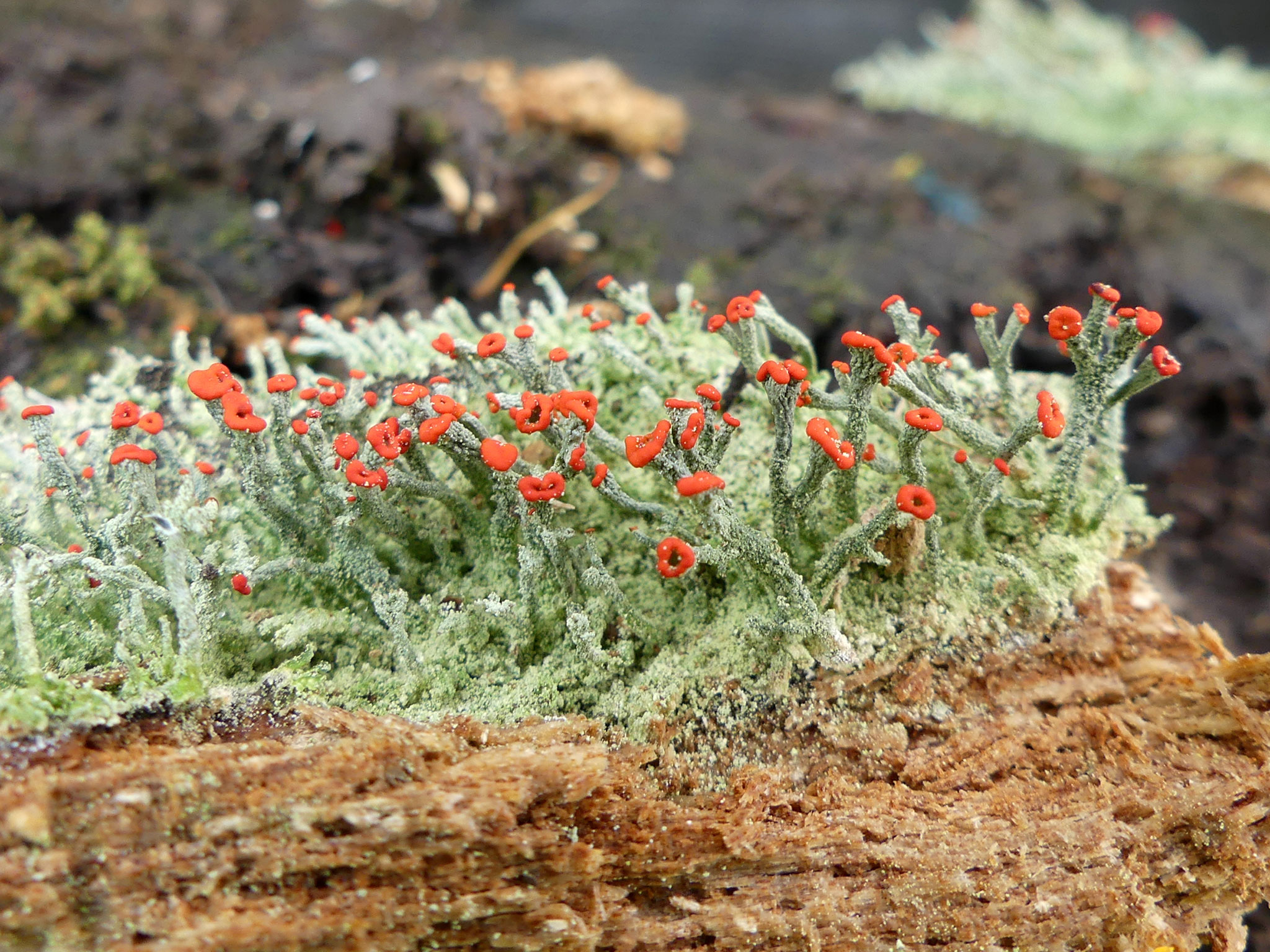

Lichens
A lichen is a composite organism, comprising mainly of a fungus and a photobiont (usually a green alga or a cyanobacterium). The fungus provides the habitat with its absorptive and protective structures while the photobiont provides the energy source for the lichen, and in some cases nitrogen as well. The fungus is almost always a sac fungus (Ascomycota) but may also be a club fungus (Basidiomycota). About 40% of the sac fungi are lichenized. Lichens have a very long fossil record, appearing in the earliest known land floras.
Lichens occur in almost every habitat in Australia including some extreme environments such as desert rocks and mountain tops. Lichens can occur on rocks, bark, sand, man-made objects (such as metal, plastic and glass) and even leaves. The larger lichens, the shrubby and leafy lichens, are visually striking and colourful, while the smaller crustose and filamentous lichens are more common but less obvious.
The close mutuality of the lichen components may confer a high level of environmental stress tolerance but the delicate balance between the components also makes lichens very susceptible to damage. They can be extremely slow-growing and very long-lived—it can take several years for a new lichen to reach the size of a pinhead. It is easy to destroy a decade of growth by walking carelessly on a lichen or collecting it. Lichens are also sensitive indicators of microclimate and of air quality.
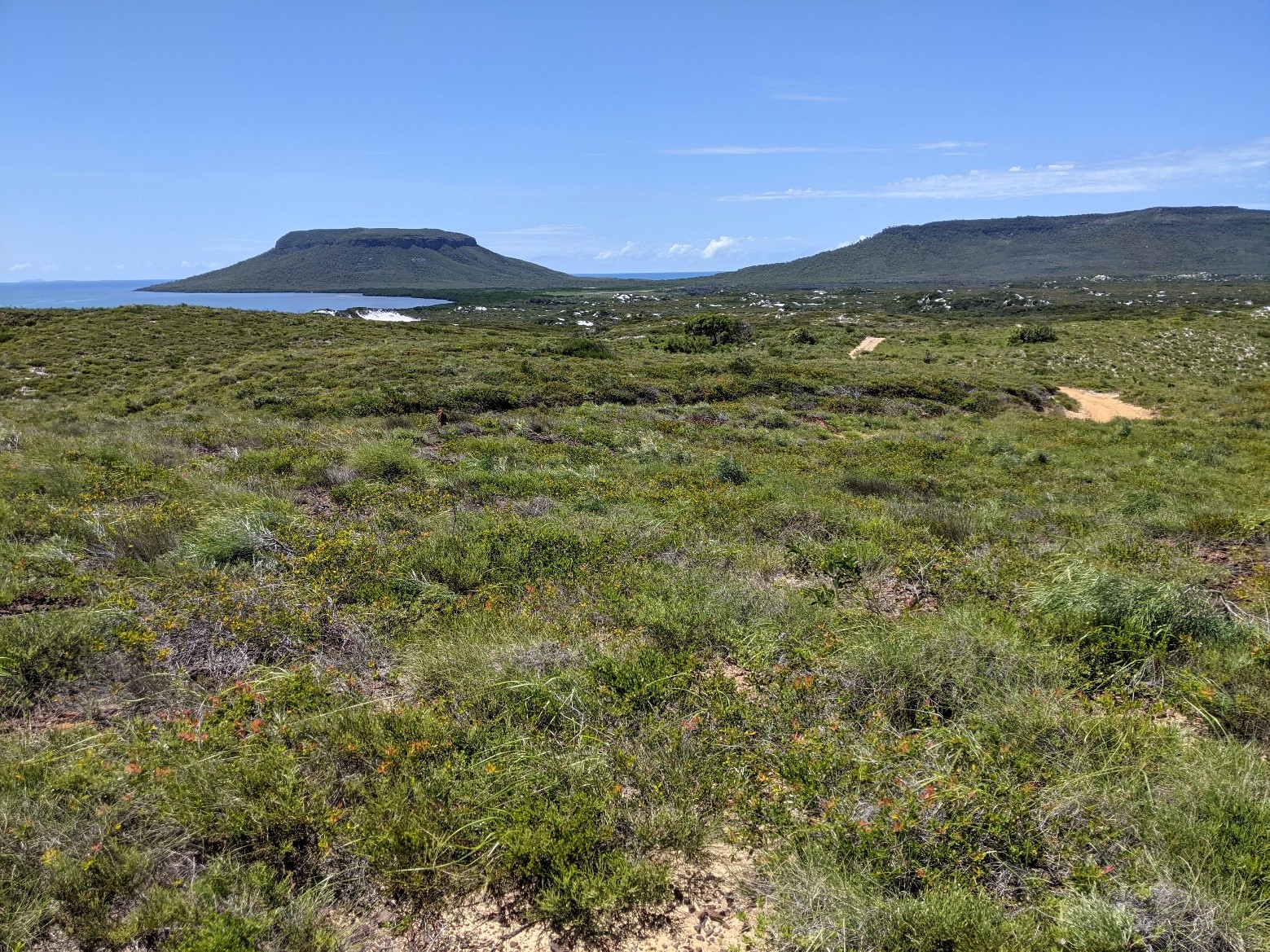

A lichen name is strictly applicable to the fungal component only, the photobiont being classified separately. Most fungal components are not known to occur outside of lichens and many show genetic adaptation to the lichen lifestyle. Lichenization has occurred at least five times within the Ascomycota and several times in the Basidiomycota.
There are more than 4,000 lichen taxa known to occur in Australia and about half of these occur in Queensland, with many more yet to be discovered, especially in central and northern Queensland. The two largest families of lichens in Queensland are the Parmeliaceae and Graphidaceae, each having more than 300 species. The Queensland Herbarium, in partnership with the Queensland Mycological Society, is actively involved in discovering and documenting the lichen flora.
The Lichens of Subtropical Queensland includes keys, descriptions and some images of lichen species found in the subtropics of Queensland .


